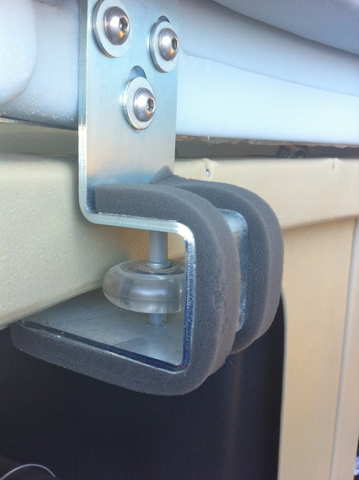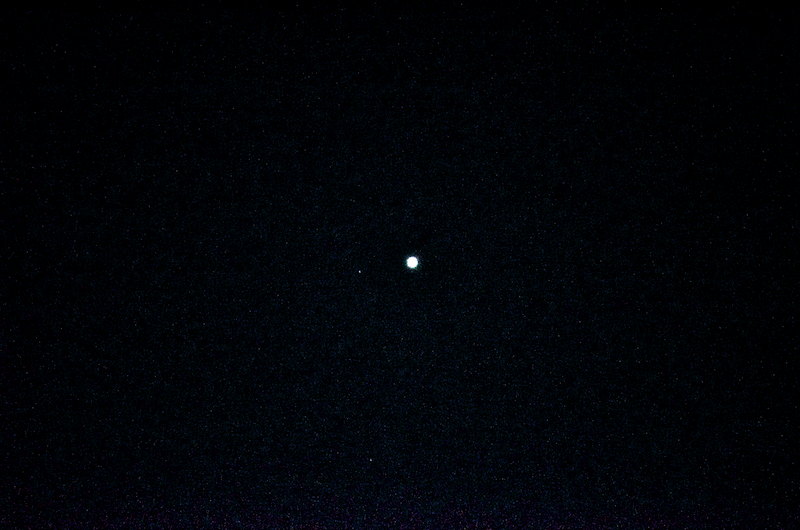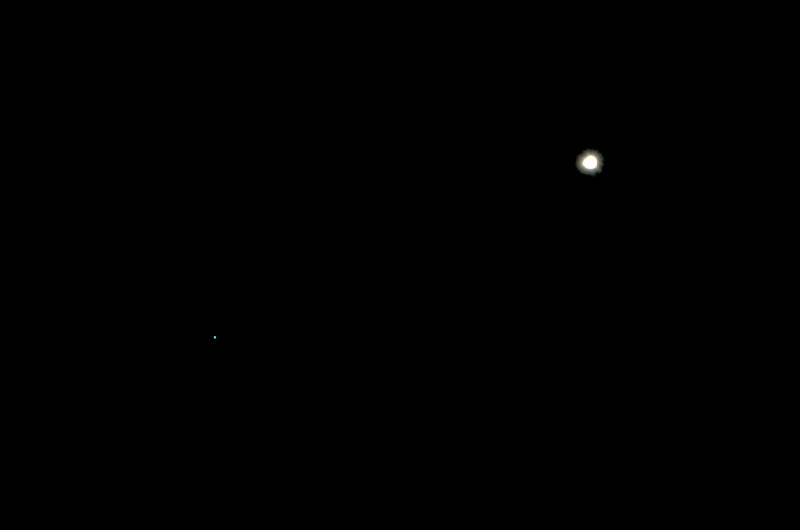
Simple Dome Mod, Venus and Uranus Conjunction
Posted: 10 February 2012
Cloudy skies returned following my previous session on 2 February. On Monday, 6 February, after seeing a tip from Mark on the SkyShed POD Yahoo Group, I decided to try the tip for myself. I added an extra wheel on two of the three dome brackets:
Before:

After:

Surprisingly, it did make a difference in rotating the dome. It was easy before the mod, and now it is even easier and smoother. The extra wheels were "spares" from the initial POD set up over two years ago.
After a week of cloudy skies, the sky cleared and I opened the observatory on Thursday, 9 February, at 1805 MST, 70°F. There were some clouds low along the horizon from the west, through north, to the east, but I hoped they would not become a problem. The forecast said it would be clear all night.
At 1811 MST, viewed Venus at 77X. Its phase was slightly more than half. The sky was still too bright to see Uranus, less than 1/3° from Venus. At 1825 MST, Uranus was now visible in the same field of view as Venus at 77X. I switched to 133X and they were both still in the same field of view. Nice conjunction. Uranus had an obvious disk at 133X. I also used 206X to view Uranus. I then looked at the conjunction using 7x50 binoculars. Uranus was clearly seen just south of Venus.
I took this photo of Uranus (left) and Venus (right, overexposed) with the D7000 DSLR, f/5.6, 1/30sec, 300mm lens, ISO 2000:

I mounted the iPhone 4 on the 8" LX200-ACF using the MX-1 afocal adapter and took this photo at 77X showing Uranus (left) and Venus (right, overexposed):

At 1858 MST, I took a quick look at Jupiter, 77X. Four moons were visible. I then returned to Venus and Uranus. I noticed that the clouds were getting more numerous; several stars were looking fuzzy. I set up for prime focus imaging with the D7000 DSLR and captured this view of Uranus (left) and Venus (right, still overexposed):

The color of Uranus is very obvious in the D7000 image.
By 1922 MST, thin clouds were over much of the sky. I decided to close up.
Closed the observatory at 1930 MST, 54°F.
I have posted reviews of NightCap and True NightVision on my ETX Site. These apps allow some types of astrophotography to be done with the iPhone.
I have also posted a web page of photos of my visits to the Kirkwood Observatory at Indiana University.
I have posted photos from my time flying the T-38 jet while in the USAF. Check them out if you are interested.
Go to the previous report.
Return to the Cassiopeia Observatory Welcome Page.